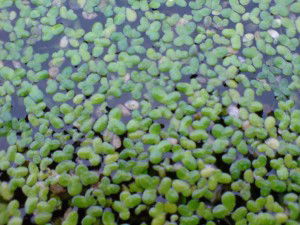Water Saving Week: work that butt!
26th March 2015
How you fill your pond makes a big difference for freshwater wildlife.
You’ve dug a new pond. You are imagining the splendour of it, wishing the months away ’til you can sit in the sunshine and admire the beautiful flowers, the intricate patterns of leaves and stems, and the constant activity of all manner of beasties. And then you turn on the tap and fill it with a costly, heavily treated cocktail of nutrients and disinfectants.
 Our tap water is great for us, but can be a big problem for wildlife. Here are a few reasons why filing or topping up your pond with tap water might not be such a good idea:
Our tap water is great for us, but can be a big problem for wildlife. Here are a few reasons why filing or topping up your pond with tap water might not be such a good idea:
High nutrient levels: Tap water can have high levels of the nutrients phosphorus and nitrogen. Whilst this doesn’t affect us, it does make a difference to what wildlife can thrive in a pond. As nutrient levels rise, the more sensitive pond species disappear from ponds. In the wider countryside that means many pond species are becoming scarcer as clean water ponds become harder to find (92% of ponds in England and Wales are now degraded and the number of plants in ponds dropped by 20% over a 10 year period). In garden ponds it means many interesting pond plants, particularly submerged species, won’t survive.
 Submerged species like the less sensitive native rigid hornwort (Ceratophyllum demersum) and nutrient tolerant non-natives like Elodea species will likely be the last submerged plants to go. And when the submerged plants disappear, so does the food and shelter of many pond animals. As nutrient levels keep rising, it is common to see only plants like duckweed (Lemna minor and L. minuta), reedmace (Typha latifolia) or algae remain.
Submerged species like the less sensitive native rigid hornwort (Ceratophyllum demersum) and nutrient tolerant non-natives like Elodea species will likely be the last submerged plants to go. And when the submerged plants disappear, so does the food and shelter of many pond animals. As nutrient levels keep rising, it is common to see only plants like duckweed (Lemna minor and L. minuta), reedmace (Typha latifolia) or algae remain.
Nutrient levels in tap water depend on where the water comes from. For example, water from the uplands is typically nutrient-poor. Water from areas dominated by intensive agricultural like South East England is generally higher in nutrients. You can find out where your water comes from and the amount of nutrients in it on your water company’s website, and compare it to the levels found in ponds that have never been affected by pollution (see our factsheet ‘How do I assess and manage pollution in ponds’).
Disinfectants: Chlorine and chloramines are added to tap water to make it safe for us to drink – they kill off pathogens that can make us ill. Unfortunately, these chemicals are also harmful to freshwater wildlife. Leaving tap water to sit in a bucket or watering can for 24 hours will allow chlorine to leave the water, but it does nothing to the amount of chloramines in the water. Aquatics and fish-keeping companies sell products designed to make chloramine treated water safe for fish, and presumably for amphibians and other aquatic animals.
You can find out what is in your tap water on your water company’s website.
A valuable asset: A lot of energy and resources go into collecting, storing, treating and delivering water to our taps. As our use of water increases, more and more water is abstracted from the environment. Freshwater wildlife habitats are damaged. Is filling a pond really an appropriate use of this highly valuable asset? We don’t see the cost to the environment or our purses (unless on a water meter) as the water pours endlessly from our taps. Perhaps it is time to give a thought to where it comes from or how it gets there.
So, what’s the alternative?
Wait for the rains: Let your pond fill with rainwater. It may take some time, but the result will be a clean water pond that could become home to a wide range of fascinating plants and animals. When water levels drop in an existing pond, you don’t need to reach for the hosepipe. It’s OK for pond water levels to drop or even for some wildlife ponds to dry out completely (not so great for fish ponds, of course). Take a look at our factsheet ‘What to do if your pond is drying out’.
Use your butt: Install and use a water butt or three to collect rainwater in the wetter months for use in the drier times. You can then use a watering can or two to keep water levels up.
Looking for a new water butt or other garden furniture? Gardenis.co.uk has kindly offered to donate 8% of all sales when you use the code FRESHWATER at the checkout.
 Think about how else you can reduce the amount of water you use and protect our freshwater habitats. Blueprint for Water highlights the issues. Waterwise have some suggestions.
Think about how else you can reduce the amount of water you use and protect our freshwater habitats. Blueprint for Water highlights the issues. Waterwise have some suggestions.
Join the conversation on water use. #watersavingweek
